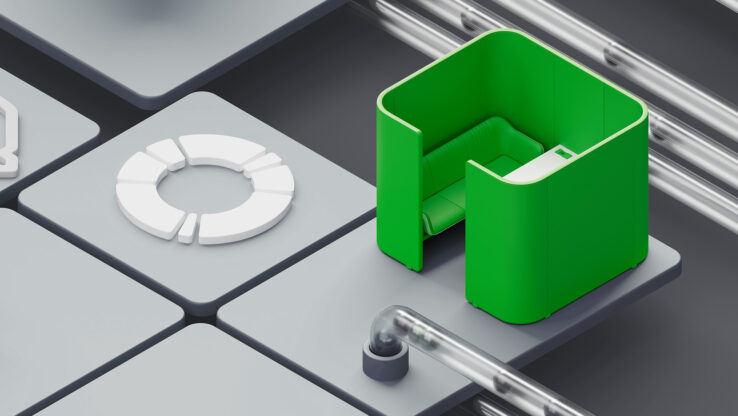
Low-Code on SAP BTP – full speed ahead
It is becoming increasingly evident in the market that the topic of low-code has already fully arrived in the SAP BTP area: There are already a variety of services that make low-code accessible in different forms for the various actors involved in the application development processes in the SAP world. Always with the aim of accelerating digital transformation and making it more cost-effective. So much for the current status – but what does the future of low-code and software development in general look like? Jakob Frankenbach, Head of Development at sovanta, dares to take a look into the future.
From my perspective, the future of low-code, perhaps unsurprisingly, is linked with generative Artificial Intelligence (AI). A corresponding solution is already released within SAP BTP: SAP Build Code is available as a service. SAP Build Code is a low-code tool built on SAP’s own GenAI assistant, Joule, which enables the generation of code and runnable software based on natural language input. This means that ideally, an SAP end-user describes a use case, sends it to the Co-Pilot SAP Joule, and subsequently receives the finished software artifact as a result of the process. How practical this will actually be in business reality? We will see. In the medium term, I expect this to serve as just a starting point, similar to Wizards in the Business Application Studio. SAP Build Code will be used for an initial design, which may also suffice for an initial demo. However, from that point onwards, software developers will take the helm and bring the application to production readiness.
GenAI as a lever for Automation in Software Development
However, considering that the topic of generative AI is still in its infancy and yet already shows enormous potential today – and impressively demonstrates this in practical applications – one can only imagine the level of maturity and diversity it will bring (not only) to AI-supported code generation in the coming years. While low-code development today often still involves manually performed tasks, (generative) AI will be a crucial driver for extensive automation throughout the entire software lifecycle.
What is currently seen as a competitive advantage will establish itself as the new standard in the long run. This means that companies that fail to sufficiently adapt to AI-supported low-code development in time will increasingly struggle to keep pace with competitors operating more efficiently in terms of the speed of digital transformation and innovation in the market. What applies at the corporate level will also be evident in the market for IT professionals.
Future Scenario: Technical Concepts, Tools & Quality Assurance
In the future, the main focus of activity will not be on crafting code manually, but rather on developing technical concepts that cleverly combine the available tools and services to generate innovation and competitive advantages. Additionally, a major challenge of this future scenario will lie in quality assurance. Regardless of how autonomously AI systems may generate software without human involvement in a few years, it would be fatal to blindly trust this process. The final checkpoint will continue to be humans who require a deep understanding of the underlying technologies and relationships to validate the correctness, completeness, and security of the resulting software. So, I am not worried about the future of the software developer profession; we are just once again faced with the necessity of being flexible, adaptable, and willing to learn. Yet, honestly, these have always been fundamental requirements of this profession.
Whether and how quickly this development will actually manifest remains to be seen. However, the increasing importance of low-code, even in the SAP world, cannot be ignored. There is already a portfolio of various services with corresponding orientations capable of providing rapid value in enterprise IT. However, the full potential underlying this is far from being reached. Therefore, an exciting and adventurous journey still lies ahead of us. In this spirit – full speed ahead with low-code!




